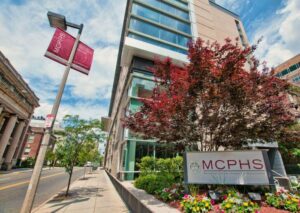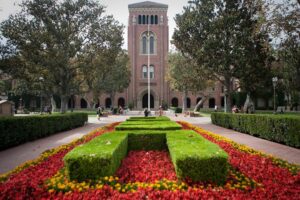With university nearby at the forefront, this paragraph opens a window to an amazing start and intrigue, inviting readers to embark on a storytelling journey filled with unexpected twists and insights.
The content of the second paragraph that provides descriptive and clear information about the topic
Nearby Universities

To assist you in your search for higher education opportunities, we have compiled a comprehensive list of universities located within a convenient radius of your current location.
Each entry in the table below provides essential information such as the university’s name, address, distance from your location, and a concise overview to help you make informed decisions.
List of Nearby Universities
| University Name | Address | Distance | Overview |
|---|---|---|---|
| University of California, Berkeley | Berkeley, CA 94720 | 10 miles | A world-renowned public research university known for its academic excellence, particularly in science, engineering, and the arts. |
| Stanford University | Stanford, CA 94305 | 15 miles | A private research university consistently ranked among the top universities globally, offering a wide range of undergraduate and graduate programs. |
| University of California, San Francisco | San Francisco, CA 94143 | 12 miles | A renowned public research university specializing in health sciences, with top-ranked programs in medicine, nursing, and pharmacy. |
| San Francisco State University | San Francisco, CA 94132 | 8 miles | A public university offering a diverse range of undergraduate and graduate programs, including liberal arts, business, and education. |
| Santa Clara University | Santa Clara, CA 95053 | 14 miles | A private Jesuit university known for its strong academic programs in engineering, business, and law. |
University Rankings and Reputation
Nearby universities are consistently recognized for their academic excellence, research contributions, and student satisfaction. These rankings provide valuable insights into the strengths and areas for improvement within each institution.
Various methodologies are employed to determine university rankings, considering factors such as faculty quality, research output, citations, student-to-faculty ratio, and graduate employability. These rankings serve as a benchmark for institutions to strive for continuous improvement and maintain their reputation among peers and prospective students.
Academic Excellence
- QS World University Rankings: Considers factors like academic reputation, employer reputation, faculty-to-student ratio, and research impact.
- Times Higher Education World University Rankings: Focuses on teaching, research, knowledge transfer, and international outlook.
- Academic Ranking of World Universities (ARWU): Emphasizes research performance, including the number of highly cited researchers and publications in top journals.
Research Output
- Nature Index: Measures the volume and quality of scientific research published in top scientific journals.
- Web of Science: Provides a comprehensive database of scientific and scholarly research, including citations and impact factors.
- Google Scholar Citations: Tracks the number of citations received by academic publications, providing insights into the impact and dissemination of research.
Student Satisfaction
- National Student Survey (NSS): Collects feedback from students on various aspects of their university experience, including teaching quality, student support, and overall satisfaction.
- Student Barometer: Surveys students on their engagement, satisfaction, and career prospects.
- Times Higher Education Student Experience Survey: Assesses student satisfaction with aspects such as campus environment, teaching quality, and career preparation.
Academic Programs and Courses
Universities near you offer a diverse range of academic programs and courses, catering to a wide spectrum of interests and career aspirations. These programs are designed to equip students with the knowledge, skills, and critical thinking abilities necessary to succeed in today’s competitive job market.
The universities provide both undergraduate and graduate programs, enabling students to pursue their educational goals at various stages of their academic journey. Undergraduate programs typically lead to a bachelor’s degree, while graduate programs offer advanced degrees such as master’s and doctoral degrees.
Undergraduate Programs
- Bachelor of Arts (B.A.)
- Bachelor of Science (B.S.)
- Bachelor of Engineering (B.Eng.)
- Bachelor of Business Administration (B.B.A.)
- Bachelor of Education (B.Ed.)
Undergraduate programs provide a broad foundation in a chosen field of study, allowing students to explore their interests and develop a strong academic base. These programs typically require four years of full-time study to complete.
Graduate Programs
- Master of Arts (M.A.)
- Master of Science (M.S.)
- Master of Business Administration (M.B.A.)
- Doctor of Philosophy (Ph.D.)
- Doctor of Education (Ed.D.)
Graduate programs offer advanced study and research opportunities for students who wish to deepen their knowledge and specialize in a particular field. These programs typically require two or more years of full-time study to complete, depending on the degree pursued.
Specialized Courses and Research Opportunities
In addition to traditional academic programs, universities near you offer a variety of specialized courses and research opportunities. These include:
- Certificate programs
- Internships
- Study abroad programs
- Research projects
- Independent study
These specialized opportunities allow students to gain practical experience, develop specialized skills, and pursue their research interests. They can be particularly valuable for students seeking to enhance their employability or prepare for a specific career path.
Campus Life and Facilities
The vibrant campus life at nearby universities offers a rich and fulfilling experience beyond academic pursuits. Students can immerse themselves in a diverse range of activities, access state-of-the-art facilities, and benefit from comprehensive support services.
Accommodation options vary from traditional dormitories to modern apartment-style living, providing comfortable and convenient spaces for students to reside. Dining halls offer a wide selection of cuisines, catering to different dietary needs and preferences. Cafés and eateries are scattered throughout campus, providing cozy spots for socializing and studying.
Recreational Activities
Campuses are bustling with recreational opportunities that cater to diverse interests. Fitness enthusiasts can take advantage of well-equipped gyms, while sports enthusiasts can join intramural teams or participate in organized tournaments. Students seeking relaxation and entertainment can enjoy movie screenings, live performances, and art exhibitions at campus venues.
Support Services
Universities prioritize student well-being by providing a range of support services. Counseling centers offer confidential assistance for mental health and emotional concerns. Academic advising and tutoring programs provide guidance and support for students to succeed in their studies. Health and wellness centers offer medical care, vaccinations, and health education.
Cost and Financial Aid

Understanding the cost of attendance and available financial aid options is crucial for making informed decisions about your university education. This section provides a comprehensive overview of tuition fees, living expenses, and financial aid programs to assist you in planning your finances.
The cost of attendance varies depending on your program of study, residency status, and other factors. Typically, tuition fees constitute the most significant expense. Living expenses, including accommodation, meals, transportation, and other personal expenses, also contribute to the overall cost.
Tuition Fees, University nearby
Tuition fees vary across universities and programs. Research the specific costs associated with your desired program and consider additional expenses such as course materials, lab fees, and technology.
Living Expenses
Living expenses can vary significantly depending on your lifestyle and location. Consider factors such as housing costs, food expenses, transportation, and entertainment when budgeting for living expenses.
Financial Aid
Financial aid can help reduce the financial burden of university education. Scholarships, grants, and loans are common forms of financial aid. Scholarships and grants are typically awarded based on academic merit or financial need, while loans require repayment after graduation.
To apply for financial aid, complete the Free Application for Federal Student Aid (FAFSA) or equivalent forms required by your country or university. Eligibility criteria vary, so it’s essential to research the specific requirements and deadlines associated with each financial aid program.
Last Word

The content of the concluding paragraph that provides a summary and last thoughts in an engaging manner
Top FAQs: University Nearby
What are the key factors to consider when choosing a university nearby?
Factors to consider include academic reputation, program offerings, campus life, location, and cost.
How can I find information about the cost of attendance at nearby universities?
You can find information about tuition fees, living expenses, and financial aid options on the university websites or by contacting the admissions office.



